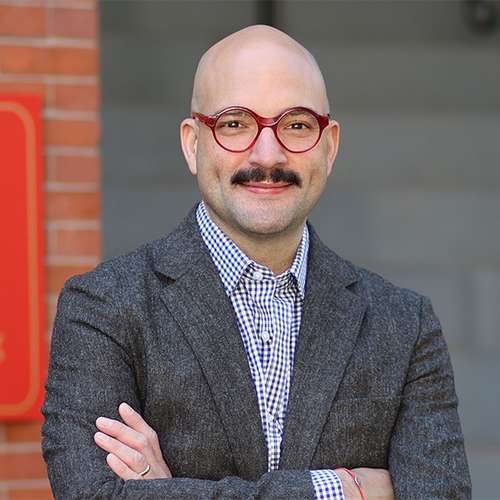What’s Next for Community Health Sciences?
What’s Next for Community Health Sciences?
In the fifth segment of our “What’s Next for Health” series, Carlos Rodriguez-Diaz, chair and professor of community health sciences, discusses the importance of community-engaged pedagogy to create change.

Embracing and creating change in community health sciences
What can change more than people and our communities? Working with people in their places or contexts is always an adventure. Researchers working with communities can develop strong relationships, learn with participants, and build capacity with the people they work with. Community health is an iterative process in which all the players should welcome learning opportunities, be ready for changes, communicate often, and celebrate achievements.
Community activism influences how we address health in communities. Decades of community-engaged research and education have contributed to community members leading efforts to improve their well-being. Many communities are no longer silent or afraid of claiming rights and mobilizing. Several movements have brought anti-colonial and anti-racist perspectives to tackle the social and structural determinants of health. Our tools of the trade are diversifying, as is our workforce, which is exciting!
Yet, there are still areas in which we must create more change. The field of community health needs to engage more in learning and research with groups that remain overlooked, such as people with disabilities and migrants. Community health sciences should move from a deficit model by doing more of what is working. We need to question, for example, why we focus on community resilience when communities resist the lack of attention to their unmet needs. And we need more community health practitioners and scholars from the communities we serve.
Educating the next generation of community health practitioners
The ways in which we learn about, teach, and research community health are changing. While some models and approaches can be adapted to meet modern needs, we have a phenomenal opportunity to question the work we have historically done to build a community health workforce. We can and should develop new frameworks and approaches to community health competencies. My own experience tells me that the disciplines encompassed within community health sciences require better integration of community-engaged pedagogy, with particular attention to developing advocacy and health policy competencies.
Community health sciences is pivotal to achieving health equity and other public health goals.
Educating about community health without engaging community members is irresponsible. We can maximize educational approaches that bring communities and students together. For example, practice-based teaching is a flexible pedagogy that provides lasting and innovative resources to agencies and prepares public health students with technical skills and professional competencies to be workforce-ready. At BUSPH, the Department of Community Health Sciences has been innovating with practice-based teaching. Our Collaborate.Health initiative has facilitated the creation of meaningful, lasting, and positive changes in multiple communities. As a School, we are uniquely positioned to be a model for practice-based public health education.
Community health programs in schools of public health must also develop strong collaborations with other disciplines in the public health field, and beyond. Our expertise in community engagement can strengthen the fundamental work of experts and practitioners in biostatistics, epidemiology, and health policy. Our work in community health is essential for research at the local and global levels, and it plays a significant role in protecting our environment. Community health research, education, and practice should also eliminate the silos with disciplines outside of public health, such as social work and education. By aligning efforts, we can improve school health programs, community mobilization, and the integration of programs that address social and health issues.
Increasing the diversity of our field
Programs in community health sciences should resemble the communities we aim to work with. We need more students from those communities that would most benefit from public health interventions. Similarly, we must recruit and retain more scholars from underrepresented groups in academia. As a Latino, I am proud to be a scholar and to chair a department of community health. Yet, I am embarrassed by the fact that only 4% of the total faculty in schools of public health in the United States are Latino/a/x. An even smaller group, only 4% of full professors in schools of public health are Latino/a/x.
By increasing the diversity among public health faculty, we improve our ability to engage with diverse communities and attract a more diverse student body. However, scholars from underrepresented groups cannot do this work alone. Increasing diversity in the community health sciences will requires all of us, particularly those privileged in academia, to work for diversity, equity, inclusion, and justice.
A bright future towards health equity
Community health sciences is pivotal to achieving health equity and other public health goals.
I see a bright future for us. We are becoming more critical of our work and sophisticated in the methods and approaches to working with different communities. Community health scientists and practitioners can disrupt the systems of oppression that sustain health inequities. We must not forget that by working towards and achieving community health, we bring joy—and what better indicator of well-being is there than happiness?

Comments & Discussion
Boston University moderates comments to facilitate an informed, substantive, civil conversation. Abusive, profane, self-promotional, misleading, incoherent or off-topic comments will be rejected. Moderators are staffed during regular business hours (EST) and can only accept comments written in English. Statistics or facts must include a citation or a link to the citation.